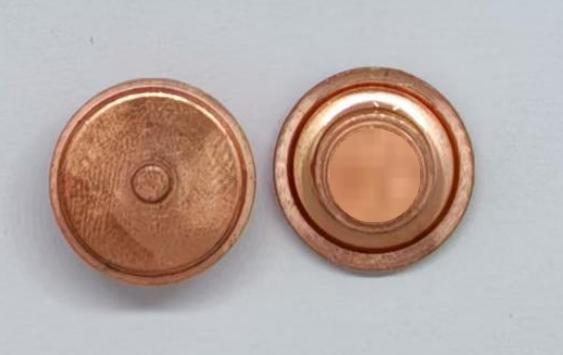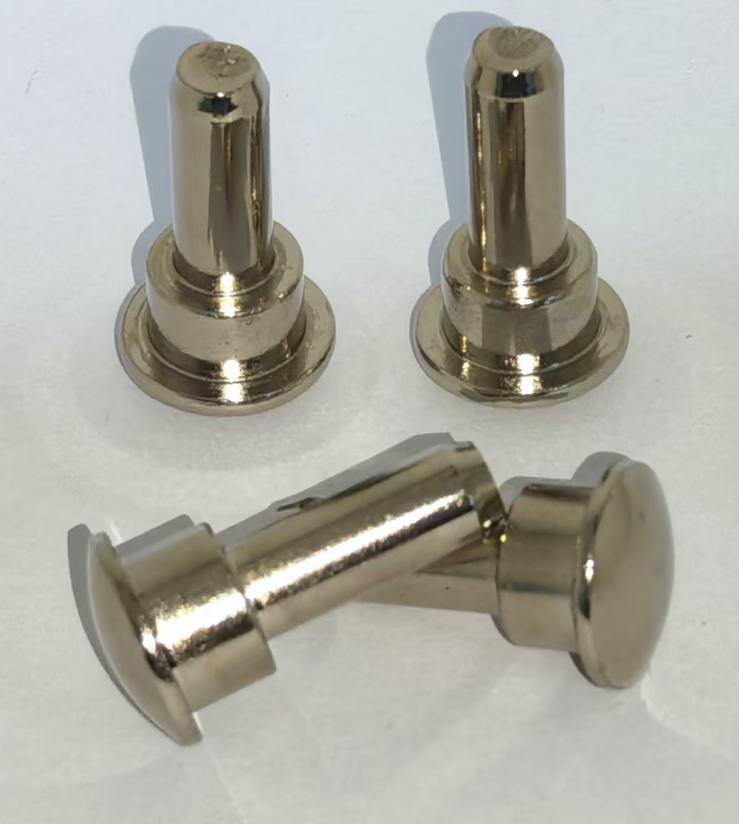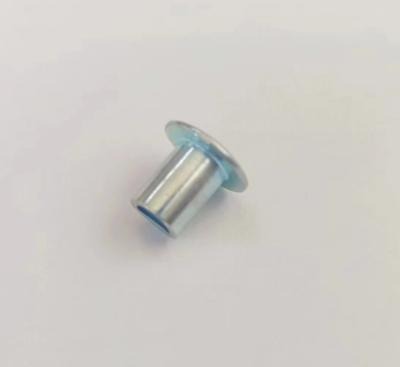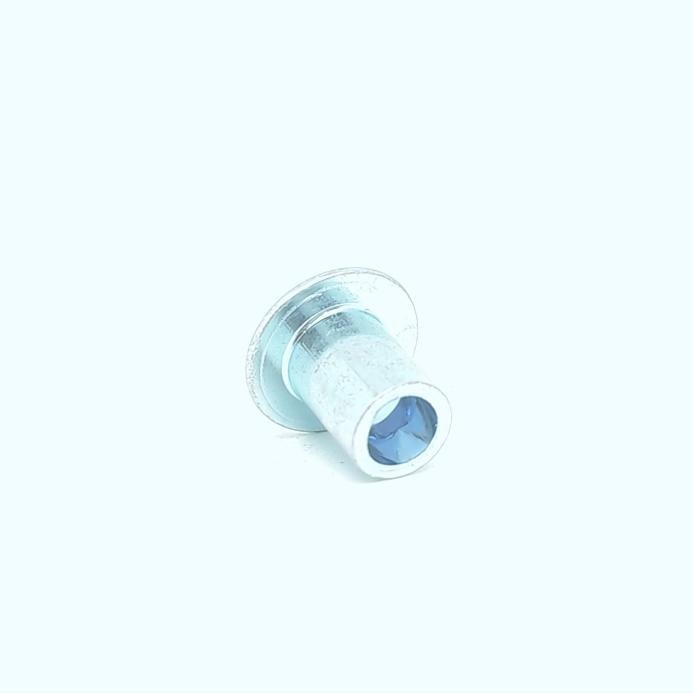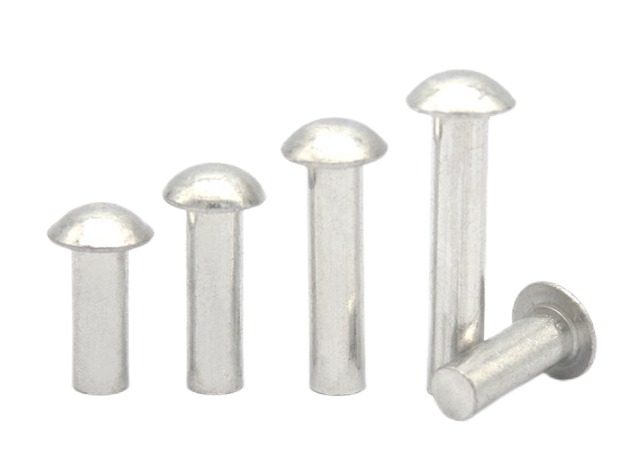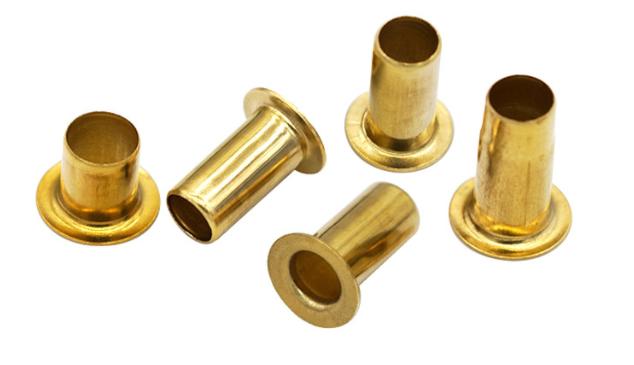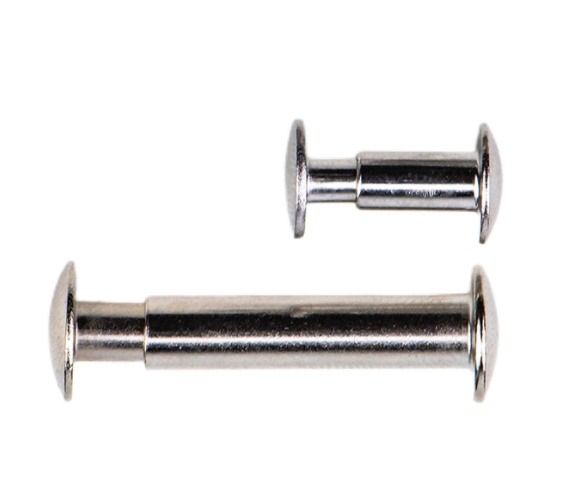How Solid Rivet Material Affects Final Product Performance
Solid rivets are a simple yet crucial component in countless applications, permanently joining two or more pieces of material. They offer a strong, reliable, and often permanent fastening solution. However, the material chosen for the solid rivet significantly impacts the final performance of the product. Selecting the right material ensures the joint can withstand the intended loads, resists corrosion, and functions as expected for the application’s lifespan.
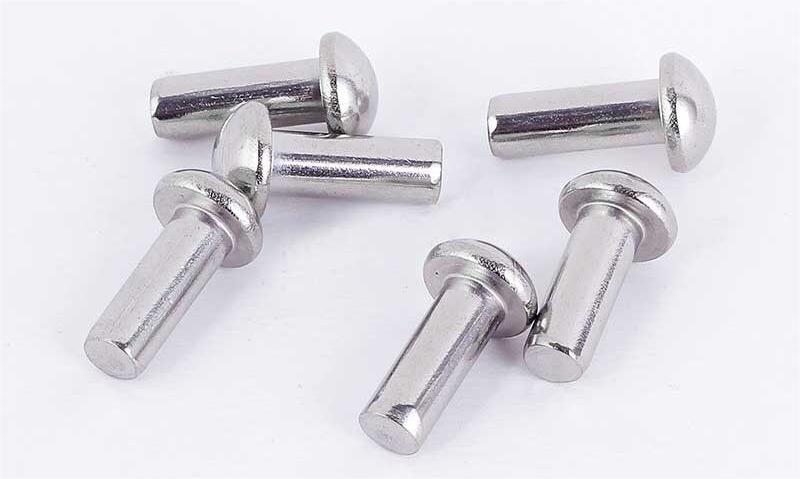
Key Considerations for Solid Rivet Material Selection
Choosing the appropriate solid rivet material hinges on several crucial factors, each impacting the joint’s performance in specific ways. Here are the primary considerations:
- Strength and Load Bearing: The ability of the joint to withstand static (constant) and dynamic (fluctuating) loads is paramount.
- High Strength Applications: Solid steel rivets are the preferred choice when dealing with heavy-duty applications requiring exceptional load-bearing capacity. Their superior strength makes them ideal for securing structural components, machinery parts, and other high-stress situations.
- Strength-to-Weight Ratio: In applications where weight is a concern, aluminum rivets offer a compelling alternative. Despite their lighter weight, they boast a good strength-to-weight ratio, making them suitable for various general-purpose applications in the aerospace, automotive, and construction industries.
- Corrosion Resistance: In environments susceptible to rust, moisture, or chemicals, corrosion resistance becomes a critical factor. A corroded rivet can weaken the joint significantly, compromising its structural integrity.
- Superior Corrosion Resistance: Stainless steel solid rivets excel in corrosion resistance. They are the go-to choice for applications exposed to harsh environments, such as marine settings, chemical processing plants, or outdoor structures.
- Moderate Corrosion Resistance: Brass and copper rivets also offer moderate corrosion resistance, making them suitable for moderately corrosive environments.
- Conductivity: For applications requiring electrical continuity, the electrical conductivity of the rivet material becomes a crucial consideration.
- Exceptional Conductivity: Solid copper rivets are the undisputed champions in electrical conductivity. Their ability to conduct electricity efficiently makes them ideal for electrical connections, grounding applications, and electrical bus bars.
- Formability and Installation: The ease of installing the rivet and creating a tight joint is another vital factor.
- Good Formability: Aluminum and brass rivets exhibit good formability, making them easier to set during installation. This allows for a tighter joint with minimal effort.
- Installation Considerations: Steel rivets, while incredibly strong, can be more challenging to install due to their inherent hardness. Special tools or techniques might be required to ensure proper setting.
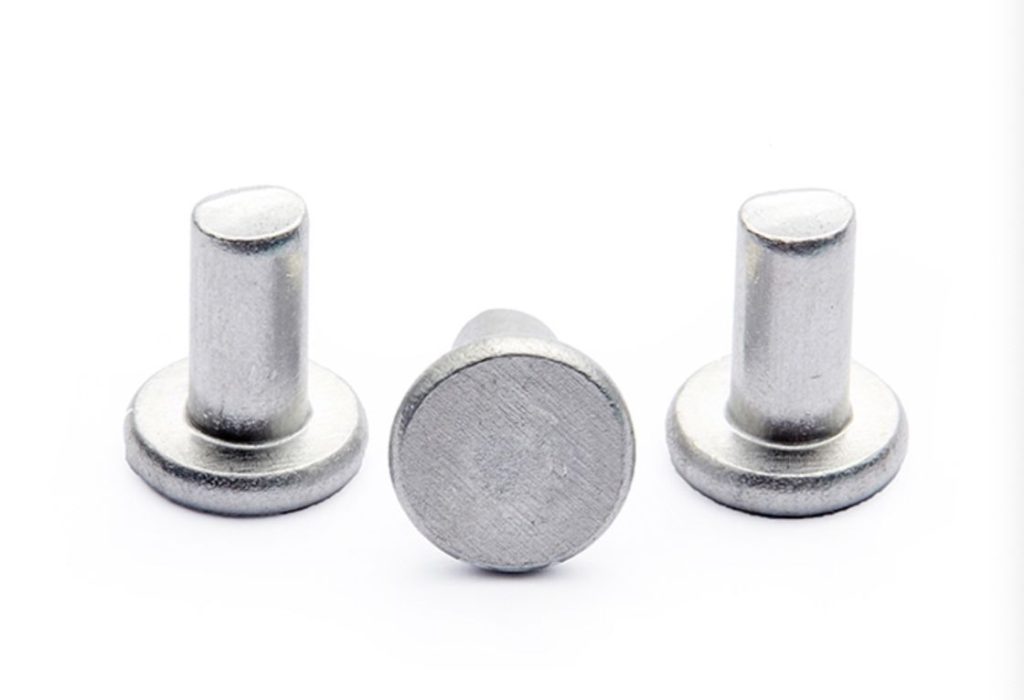
Common Solid Rivet Materials and their Applications
By understanding the properties of commonly used solid rivet materials, engineers and designers can make informed decisions for optimal product performance:
1. Solid Aluminum Rivets:
- Key Properties: Lightweight, good strength-to-weight ratio, excellent formability, good corrosion resistance (depending on alloy).
- Applications: Widely used in general-purpose applications across various industries like aerospace, automotive, construction, sheet metal fabrication, and furniture due to their affordability and versatility.
2. Solid Steel Rivets:
- Key Properties: High strength, excellent load-bearing capacity, moderate corrosion resistance (depending on coating).
- Applications: Ideal for heavy-duty applications requiring exceptional strength, such as structural components in bridges, buildings, ships, and machinery.
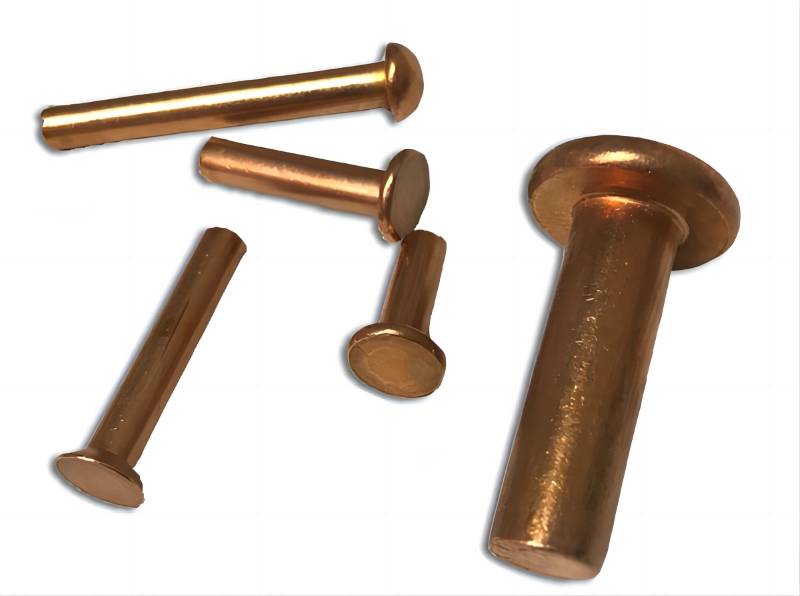
3. Solid Brass Rivets:
- Key Properties: Good balance of strength, moderate corrosion resistance, good formability, and moderate electrical conductivity.
- Applications: Popular in applications where both strength and aesthetics are important, such as furniture construction, decorative hardware, and applications requiring some electrical conductivity.
4. Solid Copper Rivets:
- Key Properties: Excellent electrical conductivity, good formability, moderate corrosion resistance.
- Applications: Used primarily in electrical applications for their superior conductivity, such as electrical connections, grounding straps, and bus bars.
5. Stainless Steel Solid Rivets:
- Key Properties: Superior corrosion resistance, good strength, moderate formability.
- Applications: Ideal for applications exposed to harsh environments, chemicals, or high humidity, including marine equipment, chemical processing plants, food and beverage machinery, and architectural applications.
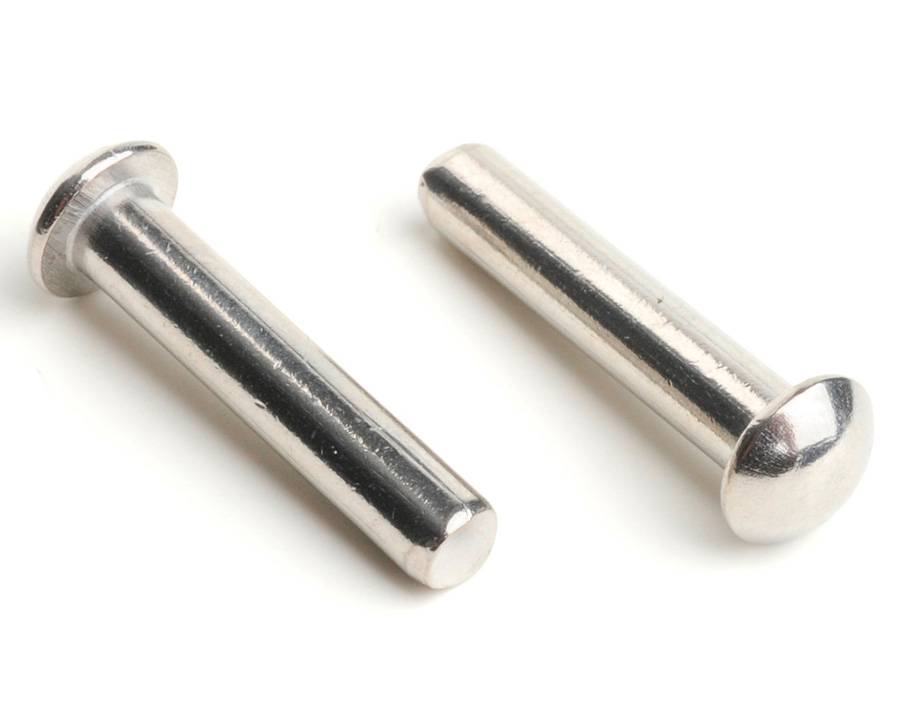
How to Install Solid Rivets for Optimal Performance?
Solid rivet installation is a seemingly simple process, but proper technique and tools are crucial for creating a strong and reliable joint. The specific requirements vary depending on the material of the rivet and the thickness of the materials being joined. Here’s a detailed breakdown of solid rivet installation for different materials:
1. Aluminum Rivets
Due to their good formability, aluminum rivets are generally considered the easiest to install. Here’s a basic overview of the process:
- Drilling: Precisely drill a hole through the materials to be joined. The hole diameter should be slightly larger than the rivet shank diameter (typically by 0.1 mm or 0.004 inches) to allow for proper rivet expansion.
- Rivet Selection: Choose an aluminum rivet with a shank length slightly exceeding the combined thickness of the materials being joined.
- Insertion: Insert the rivet shank through the pre-drilled hole, ensuring the head of the rivet rests on the outside surface of the material.
- Setting: Use a squeezing rivet setter specifically designed for aluminum rivets. This tool features jaws that compress the rivet shank tail, forming a dome shape against the backside of the material. Ensure the formed dome completely fills the space and creates a tight joint.
2. Steel and Stainless Steel Rivets
Steel and stainless steel rivets, while incredibly strong, require more specialized tools and techniques due to their inherent hardness. Here’s a breakdown of the process:
- Drilling: Similar to aluminum rivets, drill a precise hole with a diameter slightly larger than the rivet shank.
- Rivet Selection: Choose a steel or stainless steel rivet with a shank length exceeding the material thickness.
- Bucking Bar: A bucking bar is a crucial tool for installing steel and stainless steel rivets. This is a solid metal bar placed against the tail end of the rivet shank on the backside of the material being joined.
- Hammer Setting: Use a ball-peen hammer to strike the rivet head on the front side. The force from the hammer blow drives the rivet shank into the material, causing it to upset (expand) against the bucking bar on the backside. Repeat hammering with controlled force until the rivet shank fills the space and forms a tight, flush head on the backside.
3. Brass and Copper Rivets
Brass and copper, with their good formability, offer a balance between ease of installation and strength. The installation process is similar to aluminum rivets, with a few considerations:
- Drilling: As with other materials, precise hole drilling is essential.
- Rivet Selection: Choose a brass or copper rivet with a shank length exceeding the material thickness.
- Setting: A squeezing rivet setter similar to the one used for aluminum rivets can be effective for brass and copper rivets. Alternatively, a hammer and dolly technique can be used. The dolly is a flat-faced metal tool placed against the formed head on the front side, while light hammer blows are applied to further tighten the joint.
Importance of Proper Installation
Regardless of the material, proper solid rivet installation is paramount for optimal performance. Here’s why:
- Strength and Longevity: Incorrect installation techniques can lead to an improperly formed rivet head or an incomplete expansion of the shank. This compromises the joint’s strength and increases the risk of failure under load.
- Leakage Prevention: In applications requiring water or airtight seals, improper riveting can create gaps that compromise the seal integrity.
- Aesthetics: For applications where aesthetics are important, a poorly formed rivet head can detract from the overall appearance.
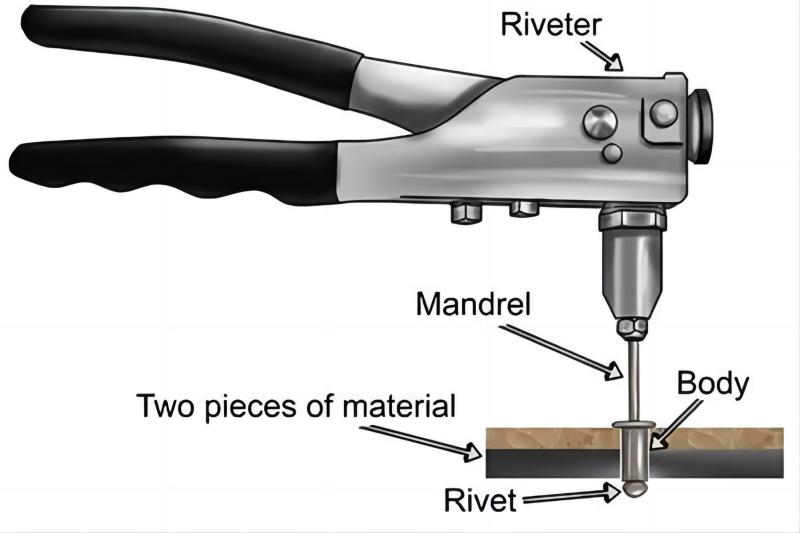
KENENG: A leading Solid Rivet Manufacturer in China
Selecting the right solid rivet manufacturer is essential for ensuring the quality and performance of the final product. Among the many manufacturers available, KENENG stands out as a reliable and reputable choice. Factors to consider when choosing a manufacturer include quality control, material certification, and reputation. KENENG adheres to strict quality control standards, ensuring the consistency and reliability of their products.
KENENG provides a wide range of solid rivet materials, including aluminum, steel, brass, copper, and stainless steel, catering to various industry needs. Their commitment to quality and customer satisfaction is evident in their comprehensive product offerings and stringent manufacturing processes.
Case studies and examples of successful projects using KENENG’s solid rivets demonstrate the benefits of choosing a trusted manufacturer. Partnering with KENENG ensures access to high-quality materials and support, enhancing the performance and longevity of the final product. Their expertise and dedication to innovation make them an ideal choice for manufacturers seeking reliable and high-performance solid rivets. Welcome free feel to contact us.

